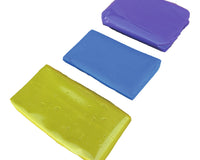Headlight lenses made from polycarbonate plastic are designed to be lightweight and durable, but they are not immune to ageing and environmental exposure. Over time, constant exposure to UV rays, harsh weather, road grime, and chemicals from car washes cause the protective coating on the headlights to deteriorate. Once this layer wears away, the plastic underneath oxidises, leading to a cloudy or yellowed appearance. This not only diminishes the aesthetics of the vehicle but also reduces the effectiveness of the headlights, impacting safety during night driving.
Many car owners mistake cloudy headlights for internal moisture damage, but in most cases, the issue lies on the exterior surface. The oxidation process roughens the plastic, scattering light instead of allowing it to pass through cleanly. The result is a dull, foggy glow instead of a crisp, bright beam. Recognising this as a surface problem makes restoration both achievable and cost-effective, especially when compared to headlight replacement.
The good news is that with the right tools, products, and techniques, you can restore the clarity of your headlights, improving both appearance and performance. Proper restoration can rejuvenate even heavily oxidised lenses, extending their lifespan and keeping your car looking newer for longer.
Why Headlight Restoration Is Important
Cloudy headlights don’t just make your car look neglected; they pose a genuine safety concern. When the lenses become dull, the beam pattern is distorted, significantly reducing visibility during night-time or foggy conditions. This can affect how far ahead you can see obstacles, road signs, and pedestrians, especially on unlit roads. For MOT tests in the UK, headlight clarity is also an essential factor—severely oxidised lenses can result in a failed inspection.
Aside from safety, restoring headlights offers aesthetic and financial benefits. A pair of cloudy lenses can make an otherwise clean and polished car appear old and uncared for. In contrast, crystal-clear headlights enhance the entire front-end appearance. Additionally, restoration costs a fraction of headlight replacement, making it one of the most effective improvements you can perform for both safety and resale value.
When done correctly, headlight restoration doesn’t just clear the fog; it restores performance, appearance, and longevity. This simple but precise detailing task combines the best of cosmetic improvement and functional restoration.
Tools and Products You’ll Need
Before starting, having the right tools and materials ensures a professional result. You will need:
-
Headlight restoration kit (or individual components)
-
Masking tape
-
Sandpaper (usually 600, 1000, 2000, and 3000 grit)
-
Spray bottle with clean water
-
Plastic or metal polishing compound
-
Microfibre towels
-
UV protectant or clear sealant for plastic
-
Optional: Dual action polisher with foam pad
Each of these items plays a role in safely removing oxidation and polishing the headlight back to optical clarity. The sandpaper removes the damaged layer of plastic, while the compound and polish refine the surface. The UV protectant or sealant acts as the finishing touch to preserve the restored clarity.
Step-by-Step Guide to Restoring Cloudy Headlights
Step 1: Preparation and Protection
Start by cleaning the headlights thoroughly using car shampoo and water to remove surface dirt, grease, or wax residue. Once clean, dry the area completely. Use masking tape to protect the paintwork and surrounding trim. The restoration process involves sanding and polishing, so the tape serves as a safety barrier to prevent accidental scratches on the car’s paint.
Inspect the headlights closely under good lighting. This helps you gauge the severity of oxidation and plan your sanding stages accordingly. If the lenses are only slightly hazy, you may begin with higher grit sandpaper. For severe yellowing or pitting, start with a coarser grit like 600 before progressing to finer grades.
Taking time during this preparation stage ensures consistency and prevents unnecessary damage to either the lens or surrounding panels. It’s always best to work methodically rather than rushing through.
Step 2: Wet Sanding the Headlights
Wet sanding is the heart of the restoration process. Start by spraying water on both the headlight and sandpaper to prevent dry friction. Begin with the lowest grit (600 or 800) to remove the oxidised outer layer. Sand horizontally with light, even pressure, keeping the surface lubricated at all times. You’ll notice the cloudy layer beginning to dull evenly—this means the damaged surface is being removed.
After the first sanding pass, move to a finer grit (1000, then 2000, and finally 3000). Change your sanding direction slightly with each grit—alternating between horizontal and vertical motions ensures an even finish and prevents sanding marks from being visible after polishing. Continue until the lens feels uniformly smooth to the touch.
Once complete, rinse and dry the headlight thoroughly. The lens will likely appear cloudy but smooth—this is normal. The polishing step will restore the transparency.
Step 3: Polishing the Headlight Lens
Apply a small amount of polishing compound onto a foam applicator pad or machine polisher. If working by hand, use firm circular motions, ensuring even coverage across the surface. If using a machine polisher, start at a low speed to spread the compound, then gradually increase speed to enhance cutting action.
Polish until the haze starts to clear and the lens becomes glossy. Depending on oxidation severity, you may need to repeat this process once or twice. Wipe off any residue using a clean microfibre towel, and inspect your progress under good lighting. The goal is to achieve clear, bright transparency across the entire lens.
For a finishing touch, use a fine plastic polish to refine the clarity further. This step enhances gloss and ensures that no micro-swirls or haze remain. Proper polishing can make a remarkable difference, often making headlights look as good as new.
Step 4: Apply UV Protection or Sealant
One of the most critical but often overlooked steps in headlight restoration is UV protection. After sanding and polishing, the factory UV-resistant coating is completely removed, leaving the raw plastic vulnerable to oxidation again. To prevent recurrence, apply a UV sealant or plastic coating specifically formulated for headlights.
Apply the protectant evenly using a clean applicator and allow it to cure as per product instructions. Some products require multiple layers for full protection, while others bond instantly to create a hard, durable film. This coating acts as a barrier against sunlight, chemicals, and pollutants, preserving the clarity you’ve worked to achieve.
Skipping this step will cause the headlights to cloud again within a few months, especially in sunny or coastal environments. Therefore, sealing is just as vital as sanding or polishing in ensuring long-term results.

Maintenance Tips After Restoration
Maintaining your restored headlights ensures they remain clear for years. Regularly washing the car with a pH-neutral shampoo removes contaminants before they can degrade the coating. Applying a spray wax or UV protectant during washes adds another layer of defence against oxidation.
Whenever you notice early signs of hazing, address them promptly using a mild plastic cleaner or polish. Preventing deterioration early saves you from repeating the full restoration process. Parking your vehicle in shaded or covered areas also helps protect the headlights from continuous UV exposure.
By following these simple maintenance practices, your restoration efforts will last much longer, maintaining brightness, safety, and appearance with minimal upkeep.
Alternative Options for Severe Damage
In rare cases where the oxidation has penetrated deeply or the lenses are cracked or severely pitted, full restoration might not yield perfect results. For such headlights, replacement may be the only long-term solution. However, professional-grade sanding and polishing can still significantly improve light output and aesthetics, even if perfection isn’t achievable.
Professional detailers also offer headlight coating services using ceramic or nano-based products that provide years of protection. If your car is a long-term investment, opting for these advanced coatings can be a worthwhile upgrade.
Conclusion: Clarity, Safety, and Aesthetics Restored
Restoring cloudy headlights is one of the most satisfying detailing tasks, offering immediate visual improvement and functional benefits. What once looked dull and neglected can be transformed into a crystal-clear lens that projects maximum brightness. The process requires patience and precision but is well within reach for any car owner willing to invest a few hours of effort.
By understanding the causes of oxidation and following proper restoration techniques, you not only improve visibility and safety but also enhance the overall look of your car. Finishing with a quality UV protectant ensures that the clarity lasts, saving you from repeated restoration or costly replacements.
Whether you’re an enthusiast detailing your own vehicle or a professional detailer offering restoration services, mastering headlight restoration is a valuable skill. It reflects care, expertise, and attention to detail—the true hallmarks of great car maintenance.




